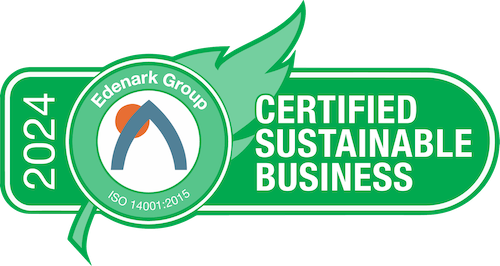Scope 3 Vendor & Supplier
You will be hearing a lot about carbon emissions, carbon neutrality, net zero and Scope 3. Please allow this to attempt to explain some of the terminology and to explain what the future holds.
First, some definitions:
Carbon Dioxide Emissions (ie, Carbon Emissions) – The burning of fossil fuels and manufacture of cement.
Carbon Footprint – A carbon footprint is a measurement of emissions of carbon dioxide or CO₂-equivalent amounts of other greenhouse gases in tonnes of emissions per unit of comparison.
Corporate Carbon Footprint – The amount of carbon your company produces in its operation (this can include Scope 1, Scope 2 and Scope 3)
- Scope 1 – The carbon you produce in you daily operation
- Scope 2 – The carbon your utility provider produces for the energy you use
- Scope 3 – 17 additional items that orbit your company (vendors being one)
Certified Carbon Neutral – A company can become certified carbon neutral by driving its Scope 1 and Scope 2 emissions to zero via reduction or balancing with an equal amount of carbon credits.
Certified Net Zero – A company can become certified net zero by driving its Scope 1, Scope 2, and Scope 3 emissions to zero via reduction or balancing with an equal amount of carbon credits.
Discussion:
A company can see and control its Scope 1 and Scope 2 emissions. But most of its Scope 3 emissions are via things (like vendors) that it cannot see or control. If a company says it is going to become Net Zero (ie, “We will become Net Zero by 2030”) not only must it drive its Scope 1 and Scope 2 emissions to zero, but it needs to, somehow, quantify its Scope 3 emissions, and drive them to zero also.
Many governments (both state and national) have started requiring large companies to report on their carbon emissions. In many cases, this will include their Scope 3.
Finally, approximately 97% of all large companies have internal sustainability departments. By mandate, they are required to use sustainable vendors that have carbon emission reduction programs in place. Prior to 2024, few of their procurement departments demanded this from vendors. But, with Net Zero and government compliance rising, these large companies are being compelled to require their vendors to become sustainable and have carbon emission reduction programs.
Therefore, via Net Zero pursuit, government compliance, or pressure to implement existing policy, you will see significant demand from large organizations for vendors that are sustainable and have a carbon emissions reduction program.
Each organization will progress at a different pace with its vendors, but you can expect the following:
- Initially, you will receive a Scope 3 letter, informing you your client is going to require you to provide carbon emissions data
- You will then be required to provide non-audited carbon emissions data (your company’s carbon emissions footprint)
- You will then be required to provide audited carbon emissions data (a 3rd party auditor’s verification of your carbon footprint)
- You will then be required to provide an action plan for reduction of your audited carbon footprint (this will typically tie to your sustainability plan)
What is TruPayroll doing to address the above?
TruPayroll is already environmentally certified sustainable via the world’s top standard, inclusive of 3rd party audit. Reduction of carbon emissions annually is a cornerstone of the certification. As such, should an organization need a vendor that is certified sustainable and has a carbon emissions program, TruPayroll can comply. TruPayroll is also happy to have conversation about the above with any organization seeking to better understand how to best proceed.


